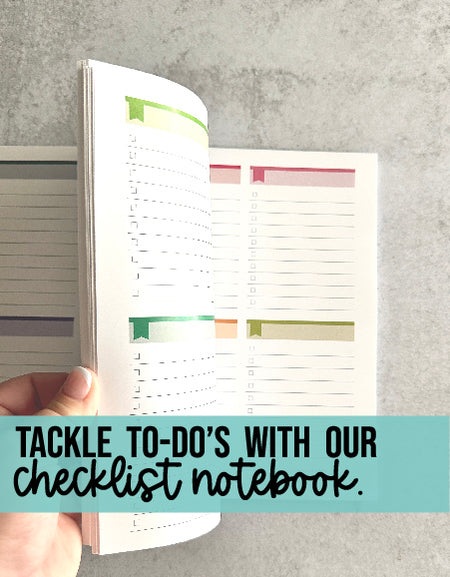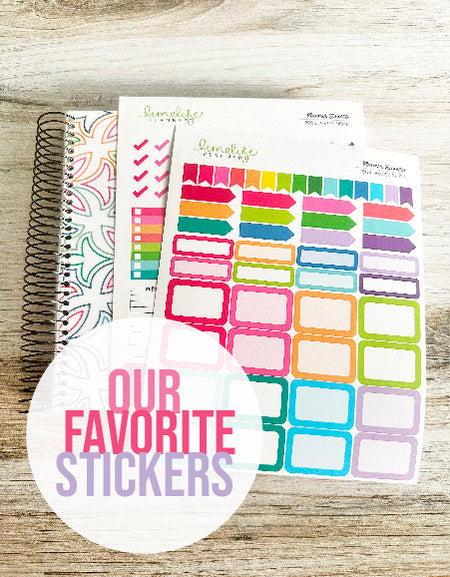Life is stressful and that’s just a fact of life. Stress levels rise dramatically due to things that are sometimes out of your control, regardless of how carefully you plan things. There is just so much to deal with: family, friends, shopping, meal preparations, job/career, seasonal changes, and inclement weather… The list just goes on and on. The unresolved issues fester and before you know it, you are tossing and turning at night.

There are many ways to alleviate stress, but an easy technique involves WRITING. Studies show that writing down your stressors and your emotions help because 1) you’re acknowledging your feelings and 2) you’re organizing your thoughts in a calm and peaceful manner, almost like meditating. An important caveat is that this technique may not be successful if you are dealing with Clinical Depression or other mental health issues. For such cases, please consult mental health professionals.
Here’s how to get started.
Step 1 Find a cute notebook and a pretty pen. Forget decorating and the hoopla if you don’t have the time for it. The most important thing is to dedicate 10 minutes to writing at the end of your day.
Step 2 Create an environment that is conducive for writing. This sounds more complicated than it really is. Before you sit down to write, make sure you are free from distractions. Turn off the T.V. Put the technology away. Turn down the volume of your music, or if music is too distracting, turn it off. Light a calming candle. Get yourself situated in a comfortable writing position.
Step 3 Now, the hard part: the actual writing. There are three forms of writing that are particularly helpful when it comes to writing the stress away: Stream of thought, webbing, and listing.
Stream of Thought
In this form you are writing a narrative in which you express your thoughts and feelings as they pass through your mind. Just like your mind wanders, your writing here will jump from thought to thought. You might start writing about your day and jump to writing about someone that angered you last week. Write about whatever comes to your mind. Focus on the things that are stressing you out. Focus on your emotions. Are you angry? Hurt? Disappointed?
Webbing
This is a brainstorming method, often taught in schools, for structuring ideas and facts. This form is helpful for getting your thoughts organized about an upcoming event. For example, a family dinner or party would be in the center bubble. There are so many moving parts to such an event. Those moving parts would be the spokes. Webbing is a great way to get your thoughts down on paper in the pre-planning stage.

Listing
The name gives it all away. Listing is an entry in a list or catalog form. When there is a lot going on, an easy way to organize your thoughts is to make a list. Listing is particularly helpful for to-dos, shopping and wishes. If you are using this form during “me time,” make a list of things you want for yourself. Maybe you need new shoes to replace those worn-out ones. Maybe there is a particular planner you want. (How you will work those purchases into budget comes later). The point here is to acknowledge your wants.
You may find that one of these forms is more suitable for the topic you want to write about. Don’t worry about which form you are using.
Step 4 Commit to writing. Of course it may not be possible to do this every day, but try every other day. Build it into your “Me Time.” This is for you. Don’t worry about your handwriting. Be honest. This is for your eyes only. No one is publishing this as a part of your memoir. If you are stuck, start by summarizing your day. Did something happen that stressed you out? You can focus on something that is worrying you. Maybe you had a good day. Write about that. Being thankful while writing about other problems is completely acceptable.

Ignoring the stressors in your life doesn’t make them go away. Writing is an easy way to acknowledge them and it doesn’t require too much exertion on your part. Sometimes your writing will surprise you; you might not have realized your true, underlying feelings about a specific person, an event, or even, yourself.

This post was written by Sadia Chowdhury for the Limelife Planners Media & Creative Team. For more information about Sadia visit her on Instagram @sadias_ruminations. Please share and repost this blog entry with your friends! All we ask is that you give credit to Limelife Planners and the post author



Comments